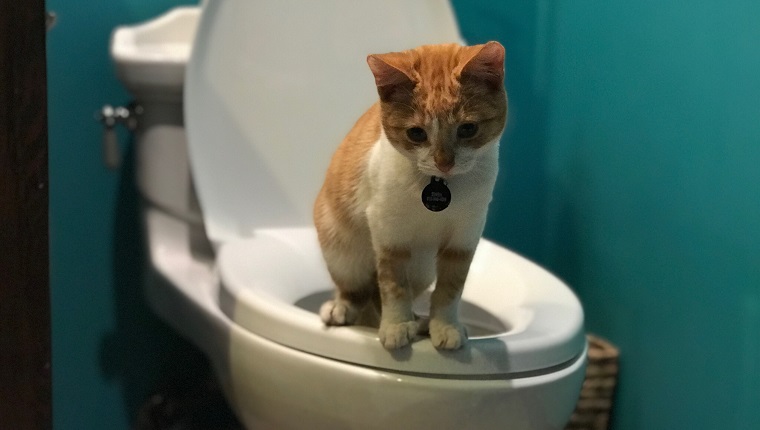Avoid Flush Cat Poop Down Your Toilet - Protect Your Pipes Infrastructure
Avoid Flush Cat Poop Down Your Toilet - Protect Your Pipes Infrastructure
Blog Article
Every person may have his or her own assumption involving How to Dispose of Cat Poop and Litter Without Plastic Bags.

Intro
As feline proprietors, it's necessary to bear in mind just how we throw away our feline good friends' waste. While it might appear hassle-free to flush pet cat poop down the commode, this technique can have detrimental effects for both the environment and human health and wellness.
Ecological Impact
Flushing feline poop presents damaging virus and bloodsuckers into the water system, posturing a significant risk to water ecological communities. These contaminants can negatively impact marine life and compromise water high quality.
Health and wellness Risks
Along with environmental worries, flushing feline waste can likewise position health risks to human beings. Pet cat feces might include Toxoplasma gondii, a parasite that can cause toxoplasmosis-- a possibly serious disease, particularly for expectant ladies and individuals with damaged body immune systems.
Alternatives to Flushing
Luckily, there are much safer and much more accountable ways to deal with feline poop. Think about the adhering to alternatives:
1. Scoop and Dispose in Trash
One of the most usual technique of taking care of feline poop is to scoop it right into a biodegradable bag and toss it in the garbage. Be sure to utilize a committed litter inside story and dispose of the waste quickly.
2. Usage Biodegradable Litter
Go with biodegradable cat trash made from products such as corn or wheat. These clutters are eco-friendly and can be safely thrown away in the trash.
3. Hide in the Yard
If you have a yard, take into consideration hiding pet cat waste in a marked location far from vegetable gardens and water sources. Be sure to dig deep adequate to stop contamination of groundwater.
4. Mount a Pet Waste Disposal System
Purchase an animal waste disposal system especially created for feline waste. These systems use enzymes to break down the waste, lowering smell and environmental influence.
Final thought
Liable family pet ownership prolongs beyond supplying food and shelter-- it likewise involves correct waste management. By refraining from purging pet cat poop down the toilet and choosing alternate disposal techniques, we can decrease our ecological impact and protect human health.
Why Can’t I Flush Cat Poop?
It Spreads a Parasite
Cats are frequently infected with a parasite called toxoplasma gondii. The parasite causes an infection called toxoplasmosis. It is usually harmless to cats. The parasite only uses cat poop as a host for its eggs. Otherwise, the cat’s immune system usually keeps the infection at low enough levels to maintain its own health. But it does not stop the develop of eggs. These eggs are tiny and surprisingly tough. They may survive for a year before they begin to grow. But that’s the problem.
Our wastewater system is not designed to deal with toxoplasmosis eggs. Instead, most eggs will flush from your toilet into sewers and wastewater management plants. After the sewage is treated for many other harmful things in it, it is typically released into local rivers, lakes, or oceans. Here, the toxoplasmosis eggs can find new hosts, including starfish, crabs, otters, and many other wildlife. For many, this is a significant risk to their health. Toxoplasmosis can also end up infecting water sources that are important for agriculture, which means our deer, pigs, and sheep can get infected too.
Is There Risk to Humans?
There can be a risk to human life from flushing cat poop down the toilet. If you do so, the parasites from your cat’s poop can end up in shellfish, game animals, or livestock. If this meat is then served raw or undercooked, the people who eat it can get sick.
In fact, according to the CDC, 40 million people in the United States are infected with toxoplasma gondii. They get it from exposure to infected seafood, or from some kind of cat poop contamination, like drinking from a stream that is contaminated or touching anything that has come into contact with cat poop. That includes just cleaning a cat litter box.
Most people who get infected with these parasites will not develop any symptoms. However, for pregnant women or for those with compromised immune systems, the parasite can cause severe health problems.
How to Handle Cat Poop
The best way to handle cat poop is actually to clean the box more often. The eggs that the parasite sheds will not become active until one to five days after the cat poops. That means that if you clean daily, you’re much less likely to come into direct contact with infectious eggs.
That said, always dispose of cat poop in the garbage and not down the toilet. Wash your hands before and after you clean the litter box, and bring the bag of poop right outside to your garbage bins.
https://trenchlesssolutionsusa.com/why-cant-i-flush-cat-poop/

Hopefully you enjoyed our part on Can You Flush Cat Poop Down The Toilet?. Thanks a ton for taking a few minutes to read our article. Appreciated our piece? Please share it. Help someone else check it out. Thank-you for taking the time to read it.
Book Your Service Report this page